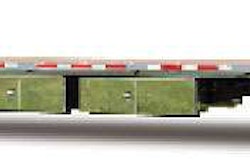How to Use Financial Statements

The cash flow statement
The cash flow statement is the most important – but least understood and used – financial statement. It shows where money comes from and where it goes during a particular period. Unlike the profit-and-loss statement, which measures earnings, the cash flow statement measures changes in cash balances.
To understand the difference, consider what happens when you haul a load. You complete the sale when you deliver the load, but the cash may not arrive for another 30 to 90 days. The P&L counts the revenue when you complete the haul; the cash flow statement counts it when you receive the cash. Likewise, you log an expense for tires on the P&L when you agree to buy them; you count it in the cash flow statement when you actually pay the dealer.
The P&L and cash flow statements cover the same period, but they are NOT just two different ways of telling the same story. Results can be positive on one statement and negative on the other. In the early years of a business, for example, it’s not unusual to show a profit and still need to raise lots of cash to pay the bills. Have you heard the phrase “negative cash flow”?
The cash flow statement usually begins with profit as reflected in the P&L and adjusts it to show only the portion of profit your company has actually received. Then it adds or subtracts cash generated or consumed by various company activities. The basic formula for the cash flow statement is:
Beginning cash +/- Cash from (or to) operations, investments or financing = Ending cash
So a P&L statement might show that you are making healthy profits, but it says nothing about whether you have the resources to make it through the month. In trucking, cash is king. The cash flow statement measures cash received from or lost to operations, investments or financing.
Cash from (or to) Operations
Cash flows from or to operating activities tell whether your trucking company’s day-to-day activities generated or consumed cash. Accountants use either a direct or indirect method to reconcile net income with cash inflow or outflow from operations.
Under the direct method, accountants show the actual cash collected and actual payments made. The resulting document looks just like a P&L, but it uses cash-basis rather than accrual-basis accounting.
The direct method is time-consuming and expensive, so accountants usually determine operating cash flow indirectly. They start with and add the change in current assets and liabilities during the period. This approach produces the same number as the direct method, it just does so indirectly.
Under either method, the cash flow statement helps you answer whether your operating activities produced cash and, if not, why not. You can answer these questions by reviewing changes in each current-asset category. Did your accounts receivable grow? Did you pay off old short-term debts? It’s very important to know the reason. Growing receivables could suggest a dangerously stretched credit limit, while retirement of debt could indicate that cash surpluses are coming.
Cash from (or to) Investments
Cash flows from or to investing activities reflect how much cash you invested in trucks, trailers, other equipment and even stocks, bonds and other securities. Cash down payments on trucks or trailers or for office equipment are a use of cash; proceeds from the sale of those items are a source of cash. Funds spent on “other assets” – non-compete agreements, loan costs, advances to subsidiary companies, franchises, etc. – would be listed here as a use of cash.
Should the company build enough surplus cash to begin a temporary investing program, funds sent to the brokerage house or invested in stocks, bonds or short-term investments like CDs would be shown as a use of cash. Liquidation of these assets is a source of cash.
The pluses and minuses of investment cash flow can be difficult to analyze. Was your equipment purchase a reasonable market demand or a possibly dangerous overexpansion? Are you siphoning off much-needed cash for questionable investments, such as officer loans or risky new ventures?
Cash from (or to) Financing
Cash flows from or to financing activities show what funds were used to pay debts or dividends or what funds came in from new loan proceeds or owner investment. If you took out a new $1 million loan, it will show up as a positive cash inflow. If you repaid $200,000 on a loan, it will show up as a use of cash. Many owner transactions will be reflected in this item, as will issuance of stock. Dividends and distributions will be a negative use of cash.
Seasoned analysts look for steady repayment of debt or reasonable proceeds from new debt issues. They also monitor owner withdrawals very carefully. Is the company distributing big dividends? If so, is the company retaining enough cash to finance future growth? n










